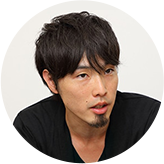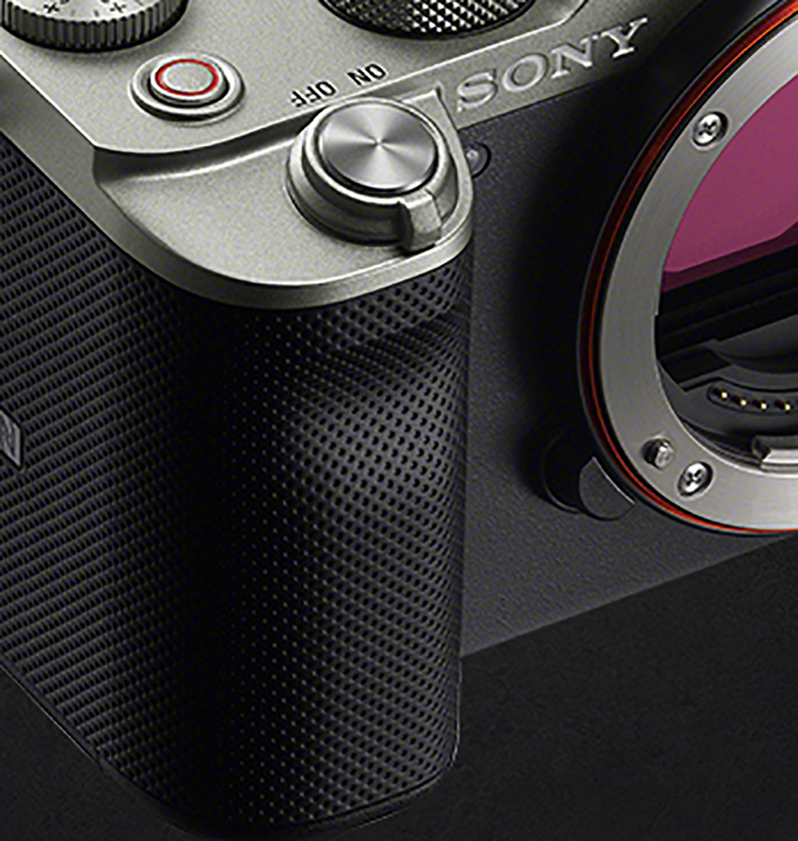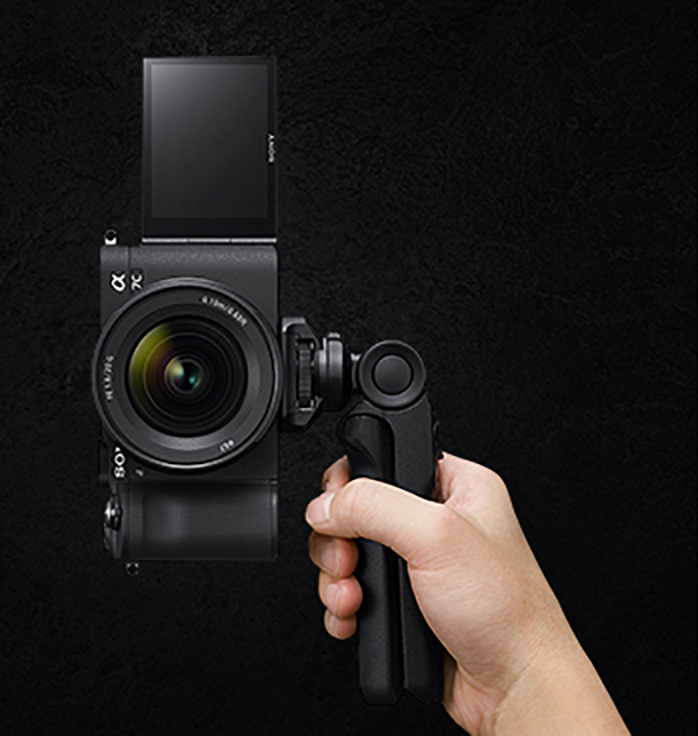
Design Talk
We spoke to Kazuhiro Ishida, who discussed the essence of the Sony α7C series, the philosophy behind the compact design and its power-packed features, and how all these made it stand out from the rest of the pack.
On the design of the α7C, we were most conscious of not compromising the performance of the α7 series in pursuit of compactness. The overall design language, including straight lines and edges, follows that of the α7 series to date. The pursuit of compactness, however, has informed the α7C's signature shape, with a dropped left shoulder. This shape is not simply an arbitrary artifact of the design, but rather is of functional importance. By fitting the mode dial and other controls within the step, a sleek and highly mobile appearance without protrusions was realised. This makes it more convenient for users who require immediacy, such as in situations where they want to take an instant snapshot.

The α7C is designed to boost creators’ satisfaction and quality of life through photography. In addition to the ease of use that photographers demand, α series is designed for simple carrying and handling so that photographers can shoot more often with a mirrorless interchangeable-lens camera in daily life.


To allow the α7C to pack a full-frame sensor into such a compact body, we thoroughly redesigned the body structure, employing newly-developed image stabilisation and shutter units and monocoque design from cars and planes. The new body construction condenses full-frame performance into a highly compact and superbly rigid structure. While the worldview and design concept of the α7 series carry over, the α7C does have some unique areas that express the enhancement of the premium and compact camera. We changed the grip feel from textured leather to a dimpled pattern finish with a punched leather motif, seeking both functionality and comfort of the grip. We also adopted metal for many body parts, emphasising the perceptual experience of shooting with a high-performance camera condensed into a compact body case.

There is increasing demand for self-expression through video creation, selfies and so on. We were strongly influenced by this trend in the design of the controls and interface. The MOVIE button was positioned to be easily accessed and operated with the index finger even when selfie-shooting. A vari-angle LCD monitor was adopted, so that the image can be monitored without obstruction by accessories attached to the shoe, and terminals with their opening covers were arranged so as not to interfere with shooting. The Access lamp was positioned at approximately 45 degrees in order to be visible for confirmation when changing either the battery under the grip, or the media on the opposite side.

The two-tone colours are a new adventure for the α, and were adopted as a symbol of the new series. The two-tone colour layout represents the main feature of the α7C: “enhanced compactness”. The chic silver represents the universal beauty of metal through the camera. It also expresses the progressiveness of the α brand by adjusting the colour without being excessively classical. We hope that the silver will be attractive not only to younger users but to a wide range of generations.

The design is built around the full-frame image quality provided for movie shooting, as well as superb stills. The Grand amber ring around the mount, symbolising the full-frame sensor, is finished with a more subtle shine, and designed to blend in with various usage scenarios while subtly emphasising performance. While more creators are focusing on post-production including RAW photo editing of still images and colour grading of videos, we are also conscious of the satisfaction of owning a product, and its presence blending in with the owner's creative space.

It was very difficult to maintain usability with a more compact body. We created lots of mock-ups, in an exhaustive programme with all the design people, varying everything operable including the grip, blindness, button positioning and height, and the ease of dial rotation and shutter release, adjusting things by tenths of millimetres. For example, the shape of the rear Delete button was adjusted based on know-how imported from pro camera design, adjusting the spacing and convexity for both easy operation and prevention of mis-operation. The grip shape was adjusted for natural operation of the release and access to other controls while maintaining the compact size.

Of course the balance with the FE 28-60mm F4-5.6 was our top priority since that's designated as the kit lens. But as a full-frame camera, we also took care to make the design work well with any attached FE lens. With the dropped shape of the left shoulder of the camera, the step angle is designed to be concentric to match any mounted Sony lens. This allows the lens to appear well-matched when viewed from any angle, the compact body and lens expressing a rigid set structure along the optical axis.
Not only the camera, but also the beautiful tools in the world around us provided inspiration. For example, the use of compelling materials and attention to detail, such as in stationery made up of primitive elements, was an essential part of the camera's design.





Subscribe on YouTube